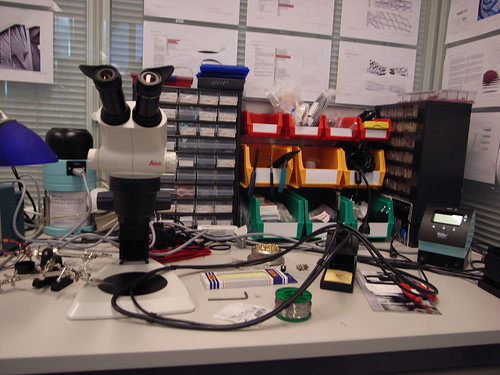A recent post by Mr. Chipchase addresses the issue of "delegation". Jan proposed that "from a design perspective a potential solution to pretty much every design problem is delegation - getting other people or technology to complete those parts of a task or activity that the user is unable to complete themselves.". This issue is of particular interest to me and though it has been addressed by lots of researchers, it's certainly Bruno Latour who refers to the concept of "delegation" in the brightest way.
In his article entitled "Where are the Missing Masses? Sociology of a Door" (Chapter 8 (pages 225-258) of Bijker & Law (1992) - Shaping Technology / Building Society: Studies in Sociotechnical Change), Latour describes the "door" cases and compares two approaches of delegation: with humans and "nonhumans". He starts by introducing the problem of doors: people don't close them and and cold air rushes in... and heat rushes out... and eventually it's impossible train people to keep doors closed. Hence a delegation of this task :
"either to discipline the people or to substitute for the unreliable people another delegated human character whose only fonction is to open and close the door. This is called a groom (...) The advantage is that you now have to discipline only one human and may safely leave the others to their erratic behaviour. (...) the weak point of the tactic can be seen: if this one lad is unreliable then the whole chain breaks down (...) It is at this point that you have a relatively new choice: either to discipline the people or to substitute for the unreliable humans a delegated non-human character whose only fonction is to open and close the door. This is called a door-closer or a groom (...) Solved? Well, not quite. (...) We have all experienced having a door with a powerful spring mechanism slam in our face. For sure, springs do the job of replacing grooms, but they play the role of a very rude, uneducated and dumb porter"
Okay, now comes the important part:
"The interesting thing with such impolite doors is this: if they slam shut so violently, it means that you, the visitor have to be very quick in passing through and that you should not be at someone else's heels, otherwise your nose will get shorter and bloody. An unskilled non-human groom thus presupposes a skilled human user. It is always a trade-off. I will call the behaviour imposed back onto the human by non-human delegates prescription. Prescription is the moral and ethical dimension of mechanisms. (...) We have been able to delegate to non-humans not only force but also values, duties and ethics. It is because of this morality that we, humans, behave so ethically, no matter how weak and wicked we feel we are. (...) The non-humans take over the selective attitudes of those who engineered them. So, to avoid this discrimination, inventors get back to their drawing board and try to imagine a non-human character that will not prescribe the same rare local cultural skills to its human users."
The article goes with other incredibly valuable insights ("The debates around anthropomorphism arise because we believe that really there exist 'humans' and 'non-humans' without realizing that this attribution of roles and action is also a choice.") but I'll stop here because there is already a lot on our plate. Why do I blog this? sunday evening readings... how does that relate to Jan's proposition? it's just meant to remind us how the design of things (nonhumans, in Latour's terms) is highly subject to embedding "values, duties and ethics" in the produced artifacts (or experience).


 (picture taken on eatliver, but this is not the real Zoolander phone, only a look-alike)
(picture taken on eatliver, but this is not the real Zoolander phone, only a look-alike)










